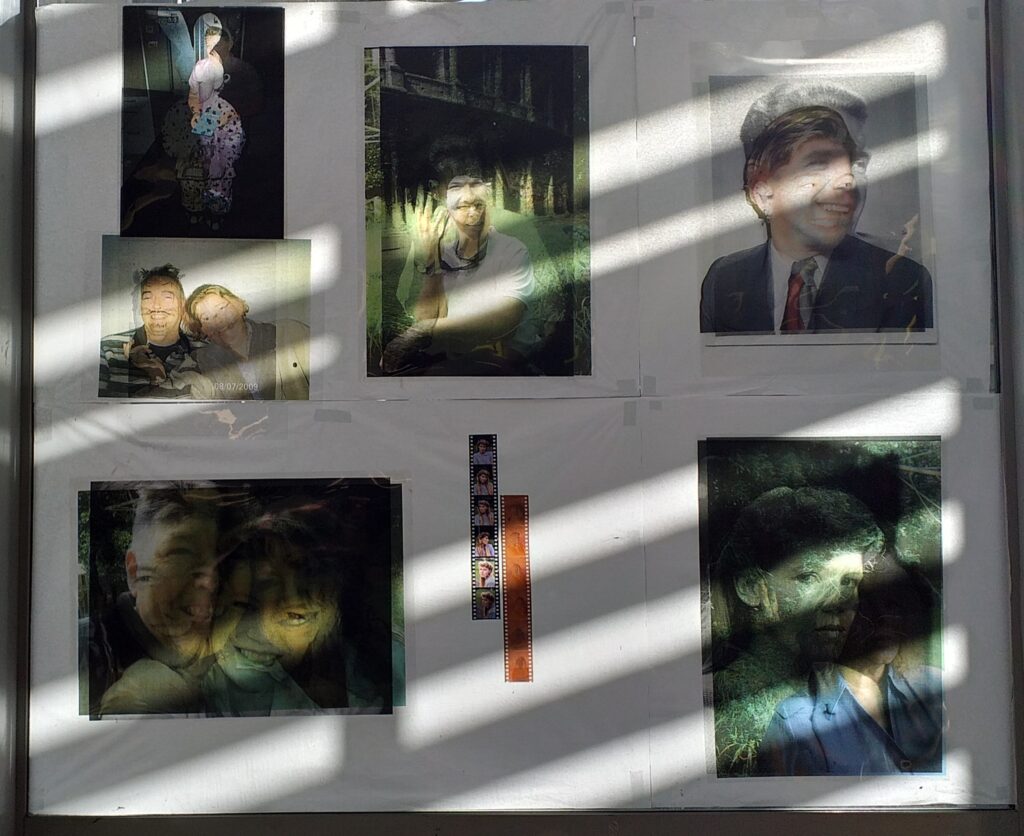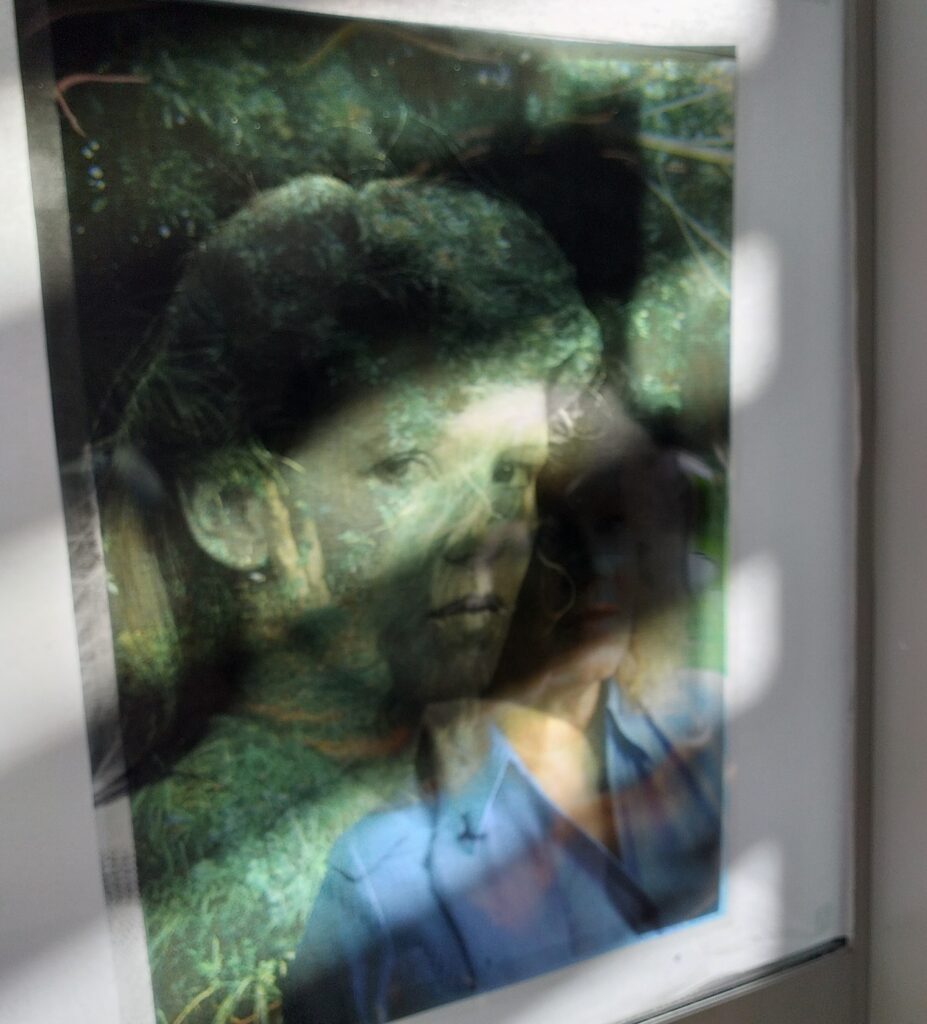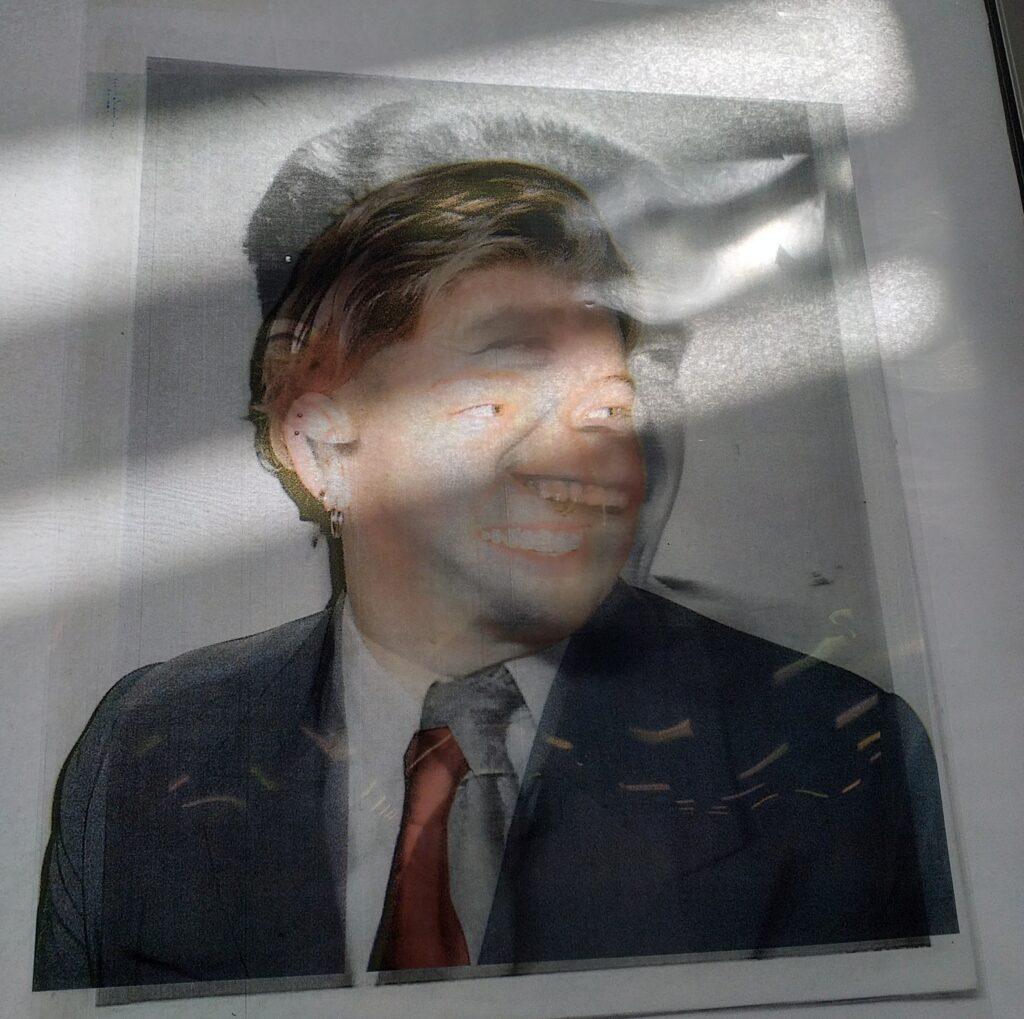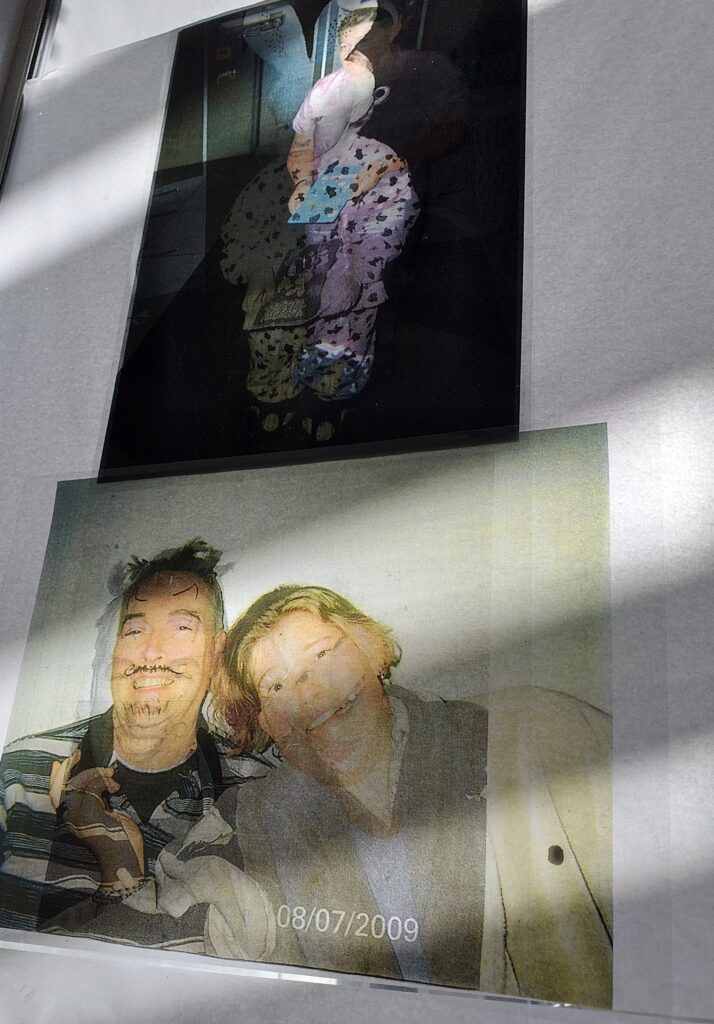After my first experiments, I realised that I needed to focus in on one part of each reference rather than trying to tackle the entire work. To do this, I blurred my eyes and assessed what stood out to me most. Colours, shapes, highlights etc. I landed on the screengrab from Pulp Fiction.

I really liked my colour-blocking experiment from last week using this reference, so I utilised this experiment to develop a new larger work. I like simplicity of colour blocking and the depth that can be achieved with this reference.
Charcoal and acrylic are my first steps in fleshing out this A2 painting. Main focus is on the male figure. I begin to fill in with washy poster paints, focusing on shadows and highlights, and achieving texture with similar methods to Wilhem Sasnel and Elizabeth Peyton.
I tried my best not to over-work this piece, keeping my gestures quick and stepping away/revisiting often. I’ve used poster paints, acrylic, charcoal and crayon in this work. I spoke with Becks while working on this piece, and they explained I could just black out or cover parts of the work I didn’t like and was worried about over-doing. This created a new technique for me, where I simply use charcoal to block out a section of the work I’m struggling with.
Moving forward, I’d like to focus in even more. Although the focus is clearly on the right hand figure, I’ve still very much been trying to tackle the entire reference. I think I can simplify and colour block more too. I really love the layers built up in this work and am excited to pursue this technique.




















































